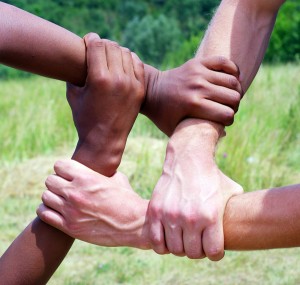Grassroots Fundraising – Getting to the Root of the Issues
Whether it’s working with young people to help them understand the economic, social and environmental impacts of food or working together for collective liberation, grassroots organizations play an important role in society. They’re important because they help fill social, environmental and economic gaps, by bringing awareness and organizing around a social issue to provide resources to those directly impacted by societal inequity.
Grassroots groups are often a hub for innovation and they do amazing work on small budgets. They are largely volunteer driven and run by those most deeply impacted by the issues. This is important as people most deeply impacted by the issues have the best solutions to address them. They have the lived experience and know what they need.
That said, grassroots organizers often face barriers in fundraising, which include, but are not limited to: access to wealth networks, lack of resources to fundraise, the taboo around asking for money and the need to demonstrate urgency. Social marginalization plays a major role in creating barriers to grassroots organizers perceived credibility, which impacts their access to networks and resources.
To overcome some of these barriers, grassroots groups often find creative ways to fundraise, such as crowdfunding campaigns, especially when there’s momentum and they can tie their cause to an event or current salient movement. “Social media is a powerful tool for raising awareness, for both brands and causes. In addition to giving everyone with access a voice, it connects us all to diverse ideas, backgrounds, and cultures.”1 It can help spark ‘conversations’ and bring issues to the forefront. Social media can also be a useful tool in building networks of solidarity, where people support communities and organizations they’re not part of to meet goals because of shared values.
Partnership building can also help further community causes by connecting grassroots groups with funders and individuals that have access to wealth networks and resources. Partnering with businesses and service providers can help provide in-kind support that can be used to solicit donations or help fill resources gaps.
The Reading Partnership is an example of a community led initiative that is “driven by a spirit of innovation and collaboration.”2 The mandate of the program is to “empower parents to share and lead in teaching their children to read, while working collaboratively to promote literacy in the Kingston Galloway Orton Park (KGO) community.”3 “The initiative is currently run through the collaborative efforts of over 35 volunteers and 10 partnering agencies supporting the program in various ways.”4 This collaborative approach strengthens the resident led initiative by providing shared capacity and resources and bringing like-minded, committed people together.
While creativity, partnership and social media are valuable tools that can help grassroots groups thrive, they do not eliminate all the barriers that they face in fundraising. Social change work can be difficult to fundraise for because it is nuanced and difficult to measure. Unlike traditional charities, it is challenging for grassroots organizations to create a simple narrative around complex issues. They must work to address the root of a problem, as opposed to the symptoms, and there may be multiple solutions to a problem that only emerge over time. This requires donors to be comfortable making investments in organizations that may challenge the status quo and test multiple approaches that may or may not work.5
Non-traditional approaches to fundraising can help these groups navigate the system and help change the way they are perceived by potential donors and society. Traditional fundraisers and donors can also play a role by learning from, and being more open to, working with grassroots groups to create systemic change.
Community led initiatives, when successful, can help create the change needed to better our world. There is no linear approach, it may at times be messy, and change definitely does not happen overnight – it takes time.
References:
- http://www.adweek.com/socialtimes/oscarssowhite-how-social-media-raises-awareness-for-diversity-and-social-issues/634162
- http://readingpartnership.com/our-story.html
- http://readingpartnership.com/about-us.html
- http://readingpartnership.com/our-story.html
- https://www.linkedin.com/pulse/beyond-floating-babies-social-change-philanthropy-cathy-mann?trk=prof-post







